External links
| Poetry |
|
|---|---|
| Other works |
|
| Concepts | |
| Family |
|
| Literary circle | |
| Works about | |
| Miscellaneous | |
Visits to St Elizabeths is a poem by Elizabeth Bishop modelled on the English nursery rhyme This is the house that Jack built. The poem refers to the confinement between 1945 and 1958 of Ezra Pound in St Elizabeths Hospital, Washington, D.C. The nursery rhyme style gives an unusual effect to the strange or unsettling descriptions of a psychiatric hospital in the poem. Likewise the poem treats Pound ambivalently describing him by turns as "honored", "brave", "cruel", and "wretched" among other things.
The poem draws on Bishop's visits to Pound during the year she spent in Washington as the Consultant in Poetry to the Library of Congress (a position now known as Poet Laureate) in 1949-50. The poem itself was written in 1956.

A nursery rhyme is a traditional poem or song for children in Britain and many other countries, but usage of the term dates only from the late 18th/early 19th century. The term Mother Goose rhymes is interchangeable with nursery rhymes.
"Twinkle, Twinkle, Little Star" is an English lullaby. The lyrics are from an early-19th-century English poem written by Jane Taylor, "The Star". The poem, which is in couplet form, was first published in 1806 in Rhymes for the Nursery, a collection of poems by Taylor and her sister Ann. It is now sung to the tune of the French melody "Ah! vous dirai-je, maman", which was first published in 1761 and later arranged by several composers, including Mozart with Twelve Variations on "Ah vous dirai-je, Maman". The English lyrics have five stanzas, although only the first is widely known. The song is in the public domain.
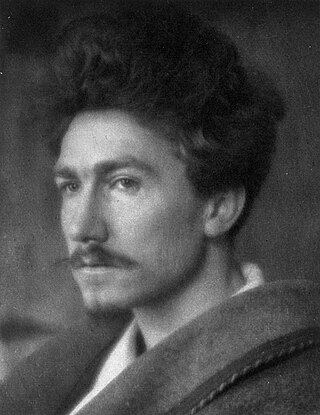
Ezra Weston Loomis Pound was an expatriate American poet and critic, a major figure in the early modernist poetry movement, and a collaborator in Fascist Italy and the Salò Republic during World War II. His works include Ripostes (1912), Hugh Selwyn Mauberley (1920), and his 800-page epic poem, The Cantos.

Mother Goose is a character that originated in children's fiction, as the imaginary author of a collection of French fairy tales and later of English nursery rhymes. She also appeared in a song, the first stanza of which often functions now as a nursery rhyme. The character also appears in a pantomime tracing its roots to 1806.
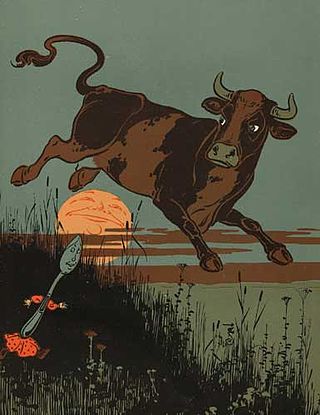
"Hey Diddle Diddle" is an English nursery rhyme. It has a Roud Folk Song Index number of 19478.
"Pussy Cat, Pussy Cat" or "Pussycat, Pussycat" is a popular English language nursery rhyme. It has a Roud Folk Song Index number of 15094.

Tweedledum and Tweedledee are characters in an English nursery rhyme and in Lewis Carroll's 1871 book Through the Looking-Glass, and What Alice Found There. Their names may have originally come from an epigram written by poet John Byrom. The nursery rhyme has a Roud Folk Song Index number of 19800. The names have since become synonymous in western popular culture slang for any two people whose appearances and actions are identical.
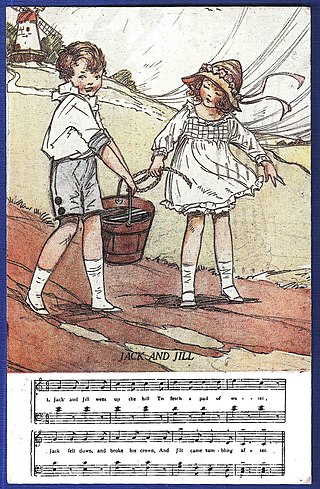
"Jack and Jill" is a traditional English nursery rhyme. The Roud Folk Song Index classifies the commonest tune and its variations as number 10266, although it has been set to several others. The original rhyme dates back to the 18th century and different numbers of verses were later added, each with variations in the wording. Throughout the 19th century new versions of the story were written featuring different incidents. A number of theories continue to be advanced to explain the rhyme's historical origin.

"The Man in the Moon Stayed Up Too Late" is J. R. R. Tolkien's imagined original song behind the nursery rhyme "Hey Diddle Diddle ", invented by back-formation. It was first published in Yorkshire Poetry magazine in 1923, and was reused in extended form in the 1954–55 The Lord of the Rings as a song sung by Frodo Baggins in the Prancing Pony inn. The extended version was republished in the 1962 collection The Adventures of Tom Bombadil.

"Little Jack Horner" is a popular English nursery rhyme with the Roud Folk Song Index number 13027. First mentioned in the 18th century, it was early associated with acts of opportunism, particularly in politics. Moralists also rewrote and expanded the poem so as to counter its celebration of greediness. The name of Jack Horner also came to be applied to a completely different and older poem on a folkloric theme; and in the 19th century, it was claimed that the rhyme was originally composed in satirical reference to the dishonest actions of Thomas Horner in the Tudor period.
Frederick Seidel is an American poet.
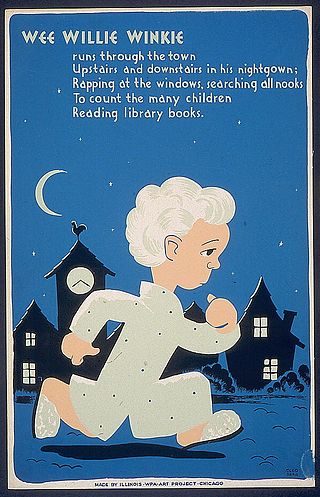
"Wee Willie Winkie" is a Scottish nursery rhyme whose titular figure has become popular as a personification of sleep. It has a Roud Folk Song Index number of 13711.

"There Was a Crooked Man" is an English nursery rhyme. It has a Roud Folk Song Index number of 1826.
George London was an English nurseryman and garden designer.
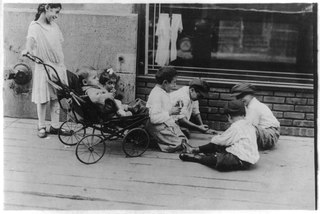
Childlore is the folklore or folk culture of children and young people. It includes, for example, rhymes and games played in the school playground. The best known researchers of the field were Iona and Peter Opie.

Rhyme Stew is a 1989 collection of poems for children by Roald Dahl, illustrated by Quentin Blake. In a sense it is a more adult version of Revolting Rhymes (1982).

Appley Dapply's Nursery Rhymes is the first of two collections of nursery rhymes written and illustrated by Beatrix Potter. It was first published in 1917. The title character is a brown mouse who takes food out of a cupboard in someone else's house.
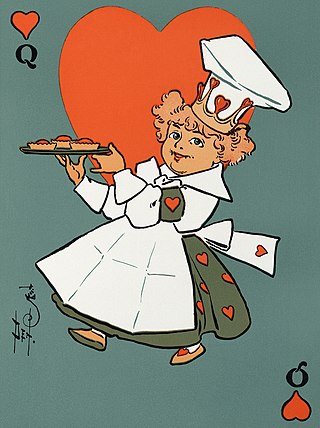
"The Queen of Hearts" is an English poem and nursery rhyme based on the characters found on playing cards, by an anonymous author, originally published with three lesser-known stanzas, "The King of Spades", "The King of Clubs", and "The Diamond King", in the British publication The European Magazine, vol. 1, no. 4, in April 1782. However, Iona and Peter Opie have argued that there is evidence to suggest that these other stanzas were later additions to an older poem.
Charles Guenther was an American poet, critic and translator. He was born in St. Louis, Missouri. His book, Phrase/Paraphrase, was nominated for the Pulitzer Prize in Poetry.
Omar Shakespear Pound was an Anglo-American writer, teacher, and translator. The son of Ezra Pound and his wife Dorothy Shakespear, Pound was the author of Arabic & Persian Poems (1970) and co-author of Wyndham Lewis: A Descriptive Bibliography (1978). He also wrote poems of his own and published material about his parents.